ISPE 2021 - November 12-14, 2021
LOCAL NEWS FOR ISPE 2021
Hinet New:
https://times.hinet.net/news/23604807
(PDF Download)
Sina New:
https://news.sina.com.tw/article/20211115/40564288.html
(PDF Download)
CNA New:
https://www.cna.com.tw/postwrite/Chi/304031
(PDF Download)
NCHU New: https://www2.nchu.edu.tw/news-detail/id/52159
(PDF Download)
PCHome New: https://news.pchome.com.tw/living/cna/20211115/index-16369411249158818009.html
(PDF Download)
ISPE 2021 Online Airmeet: https://www.airmeet.com/e/f186d530-24ec-11ec-a1b1-0d20c91ef971
Previous ISPE 2021 Proceedings
scene of the oral
sessions
Online oral sessions
Poster Exhibition Area
Outstanding oral
presentation award in ISPE 2021 are announced
nGaN Light-Emitting Diodes with
Embedded Porous Reflector and Tunneling Junction.
Outstanding poster
presentation award in ISPE 2021 are announced
Microfluidic gold nanoparticle aptasensor platform for
blood potassium detection in chronic kidney disease
patients.
The five-star Han-Hsien International Hotel
Located on Sihwei Road across from the Kaohsiung City
Hall, the five-star Han-Hsien International Hotel offers
42-stories of accommodation where even the most seasoned
traveler will encounter a harmonious blend of luxury and
personal charm without a hint of ostentation. It is
conveniently located just 15 minutes from the Kaohsiung
International Airport. The magnificent ambience of the
hotel's rooms and state-of-the-art facilities, together
with the warmest of service will ensure the comfort of
your stay. This popular hotel will entice you in a way
no other can and will be your first destination whenever
you visit this promising city of tomorrow.
All of the Han-Hsien International Hotel's 311 guest
rooms and suites are having a beautiful architectural
design and bright and transparent glass, which make the
hotel look magnificent and elegant.
Location
With the most breath-taking view of Kaohsiung, Han-Hsien
International Hotel located alongside of the most decent
boulevard of Sihwei Road.
The hotel is across from the Kaohsiung City Hall,
secluding from noisy bazaar while easily accessible of
downtown. With convenient and rapid transport
facilities, it takes only 15 minutes to drive from Han-Hsien
International Hotel to Kaohsiung Airport and Kaohsiung
Main Station, 30 minutes drive from the HSR Station to
Han-Hsien and accessible by several bus routes (No. 25,
36, 69, 0 South, 0 North, Red 21, Minzu Main Line and
shuttle bus No.100, etc). Near famous business circles
for convenient access to various major business,
shopping and entertainment centers.
Transportation Information
Note:
• One regular registration can publish a paper.
Full Paper Registration Fee Includes:
• 15 minutes Oral presentation / Poster Presentation
• Proceedings
• Conference program
• Attendance to all sessions
• Name tag
• Certificate of presentation
• Conference bag
• Lunches, coffee breaks and Banquet
Abstracts Registration Fee Includes:
• 15 minutes Oral presentation / Poster Presentation
• Conference program
• Attendance to all sessions
• Name tag
• Certificate of presentation
• Conference bag
• Lunches, coffee breaks and Banquet
Online Registration Fee Includes:
• 15 minutes Oral presentation / Poster Presentation
• Conference program
• Attendance to all sessions
• Electronic certificate of presentation
Listener Registration Fee Includes:
• Conference program
• Attendance to all sessions
• Name tag
• Certificate of presentation
• Conference bag
• Lunches and coffee breaks
Refund/Cancellation Policy
If a registrant is unable to participate in the event
for any reason, he or she can replace other co-authors
or other people from the same institution/organization
through arrangements with the registrar. A written
request for cancellation must be sent to the conference
secretary via email nchugipe@gmail.com.
In case of cancellation, partial cancellation or
modification, the following fees will be charged:
• Cancellation up to 90 days prior to event date : Free
of charge
• 89-30 days prior to event date : 50% processing fee is
required
• 29-0 days prior to event date : No refund
Speakers
Prof. Ming-Chang Lin
Fellow of Academia Sinica, Taiwan
Special Issue "Selected
Papers from ISET 2021, TSBME 2021, ISPE 2021, SEMBA
2022, and IEDMS 2022"
Rigester place
Symposium room
Group photo of
attendance
Group photo of the
scholars
Quantum-chemical Elucidation
of Complex Chemical Processes of Practical Interest.
Presented by
Ming-Chang Lin
Fellow
of Academia Sinica, Taiwan
Robert W. Woodruff Professor Emeritus of Emory
University, U.S.A.
Micro-LED
Technology Development.
Presented by
Ray-Hua Horng
Distinguished Professor at the
Institute of Electronics
National Yang Ming Chiao Tung University

Bandgap Engineering and Device Applications of
Dilute Nitrides.
Presented by
Charles
W. Tu
Mount Jade Scholar and Research
Professor
Department of Electrical Engineering National Chung
Hsing University, Taiwan
Distinguished Professor Emeritus Department of
Electrical and Computer Engineering University of
California, San Diego, U.S.A.

MICAtronics for flex sensors.
Presented by Ying-Hao
Chu
National Yang Ming Chiao Tung
University, Taiwan
2014 Highly
Cited Researchers in Materials Science (Thomson
Reuters)



Machine-learned Potential
Model for Atomistic Simulations of Mechanical Properties
of Chemically Complex Alloy.
Rare earth based
quarternary Heusler compounds RXVZ(R=Lu, Yb; X=Fe,
Co, Ni; Z=Al, Si).
Quantum
dot-based white organic light-emitting diodes
excit-ed by a blue OLED
1Department
of Engineering Science, National Cheng Kung University,
Taiwan
2
High temperature
coefficient of resistance in MoxW1-xS2 thin film.
2
Department of Electronic Engineering, National Kaohsiung
Normal University, Taiwan
Improvement in 80*160
Passive-Matrix u-LED
Display via Pas-sivation Coatings.
2
Department of Materials Science
and Engineering, National Chung
Hsing University, Taichung, Taiwan
3
Department of Applied Materials
and Optoelectronic Engineering, National Chi Nan
University, Nantou
54561,Taiwan
Minghsin University of Science and Technology, No.1,
Xinxing Rd., Xinfeng Hsinchu, Hsin-Chu, Taiwan
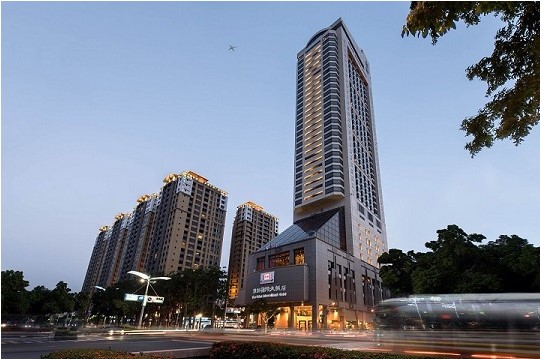
Highway: Go south on the Zhongshan highway and exit on
Jhongjheng Interchange. Drive along Jhongjheng Road,
turn left at Fusing Road and go straight to Sihwei Road
to get to the hotel.
Bus: Take Kaohsiung buses No. 25, 36, 69, 0 South, 0
North, Red 21, 90 Minzu Main Line to City Hall station,
or take shuttle bus No.100 and get off at Fushing Road
Intersection.
Airport: About 20 minutes drive.
Kaohsiung Station: About 15 minutes drive.
HSR Station: About 30 minutes drive.
KRTC: Please take the Red Line, and get off at R7
Station(Shihjia).
By walk or taxi, please take R8 Station(Sanduo Shopping
District) EXIT 6 to Jhongshan 2ND Road, turn right to
Sihwei 3RD Road and go straight until Fusing Road.
Take Red 21 transit shuttle bus at R8 Station(Sanduo
Shopping District) EXIT 3.
Please take bus 90 at Minzu Main Line, and to the R8
Station(Sanduo Shopping District) EXIT 4, located at Sin
Kong Mitsukoshi, take off at the Kaohsiung city
government.
Please contact with receptionists for details.
• Student fee is ONLY applicable for the student who is
the FIRST author.
• Additional paper registration precondition: The
registered author should be the first authors in both
papers.
• All conference attendees must register. Personal
badges will be provided to identify registered
participants.
Plenary Speakers
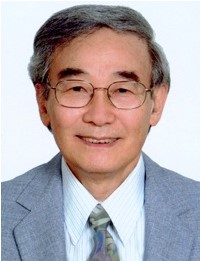
Robert W. Woodruff Professor Emeritus of Emory
University, U.S.A.
Center for Emergent Functional Materials Science,
Department of Applied Chemistry
National Yang Ming Chiao Tung University, Hsinchu,
Taiwan .
Quantum-chemical Elucidation of Complex Chemical
Processes of Practical Interest
Abstract of Plenary Speech
Mechanisms of complex chemical systems of practical
interest occurring in the gas phase as well as in the
condensed phases have been elucidated by quantum
chemical modeling. Specifically, the kinetics and
mechanism for the hypergolic ignition of trimethyl
aluminum, (CH3)3Al,
in air, which has been known to be industrially
hazardous, the auto-ignition reactions of nitrogen
tetroxide (NTO)-Hydrazine propellant systems, the O2-(g)
ion sanitation process, and some selected
TiO2 nano-materials
functionalized in our laboratory for water splitting
will be presented with available experimental data.

Distinguished Prof. Ray-Hua Horng
Fellows of SPIE, IEEE, OSA, IOP
Distinguished Professor at the Institute of Electronics
National Yang Ming Chiao Tung University
Title of Plenary Speech
Micro-LED Technology Development
Abstract of Plenary Speech
The talk is to introduce the developing of microLED
technology for display applications. There is a great
improvement in the MicroLED technology. They contain the
epilayer structure, processing, mass transferring,
repairing and characteristic measurements. In this talk,
two kinds of GaN-based microLEDs and related devices
performance will be discussed. One in very mature blue
GaN LEDs and another is new GaInN-based red light
microLEDs. Even thy can be fabricated into microLEDs,
there exist some defects and needed processing to repair
them. After, the fabricated module microLEDs and related
problems will be described. The technology trend will
also be mentioned in this talk.
Keynote Speakers
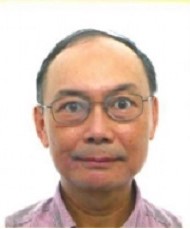
Chair Prof. Charles W. Tu
Mount Jade Scholar and Research Professor
Department of Electrical Engineering, National Chung
Hsing University, Taiwan
Distinguished Professor Emeritus
Department of Electrical and Computer Engineering, University of California, San Diego,U.S.A.
Title of Keynote Speech
Bandgap Engineering and
Device Applications of Dilute Nitrides
Abstract of Keynote Speech
Incorporating
~1% nitrogen into GaAs, InP, and GaP results in a large
bandgap bowing, a large change of conduction band
lineup, and in GaP even a large change in the band
structure from indirect to direct bandgap. These three
bandgap engineering parameters from dilute ni-trides are
used to improve the performance of electrical,
optoelectronic, and photovoltaic devic-es. When GaInNAs
is used as the base of a GaAs heterojunction bipolar
transistor (HBT), the turn-on voltage is lowered than
that of GaAs-base and GaInAs-base HBT due to the smaller
bandgap. Similarly, GaInNAs can be lattice-matched to
GaAs and can improve the conversion efficiency of a
multijunction solar cell. Incorporating 0.5% of N into
GaP results in a direct band gap material. Thus, GaNP
solar cells achieve 3 times the conversion efficiency at
one quarter of the thickness when compared to GaP solar
cells. When InNAsP is the quantum well of an InNAsP/GaInAsP
optically pumped quantum-well microcavity laser, the
light output is larger than that of GaInAs/GaInAsP
counterpart due to the larger conduction-band offset.
Sim-ilarly, the light output of a GaNP/GaP
light-emitting diode (LED) is larger than that of an Al-GaInP/GaAs
LED at the same wavelength
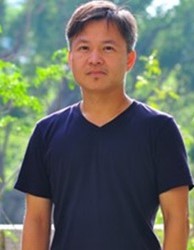
Distinguished Prof. Ying-Hao Chu
Department of Material Science and Engineering
National Yang Ming Chiao Tung University, Taiwan
Title of Keynote Speech
MICAtronics for flex sensors
Abstract of Keynote Speech
A new world is being formed based on the technologies composed of artificial intelligence, Internet of Things (IoT), and robots. Especially, in the research fields of IoT and robotics systems, a device with mechanical flexibility can deliver more degrees of freedom as far as the design aspects are concerned. Therefore, the development of soft and flexible electronics becomes an important research direction for wearable and IoT devices. Due to the mechanical flexibility, polymer materials and thin metal foils are commonly used in the fabrication of flexible electronic systems. However, the reliability issue under practical operations hinders the applications of these flexible electronics, especially for those on polymer based substrates. This is attributed to a mismatch of thermal expansion coefficient between substrate and functional materials or low thermal and chemical endurance of polymers and organic materials. A lot of researchers are working hard and together to expand the applicability of current flexible devices. However, new pathway to flexible electronics can also be developed in parallel to provide more subtle solutions, thus in need of new platform to integrate functional materials with good thermal and chemical stabilities together with mechanical flexibility. In this research field, oxides can play an important role due to their intriguing functionalities and superior thermal and chemical stabilities. To deliver high-quality thin films or structures based on oxides, heteroepitaxy is essential. However, the lack of a suitable approach remains an obstacle for flexible oxide heteroepitaxy. van der Waals epitaxy (vdWE) involving two-dimensional layered materials can play a crucial role in the expansion of thin film epitaxy by overcoming the bottleneck of material combinations due to lattice/thermal matching conditions inherent to conventional epitaxy. In this study, we use a 2D material as the substrate. In this talk, we confine ourselves to the validity of vdWE of functional oxides on muscovite mica throughout this treatise. With such demonstrations, it is anticipated that MICAtronics, vdWE on mica, can reveal unusual properties and emergent phenomena in the realm of high-performance flexible device applications.
Invited Speakers
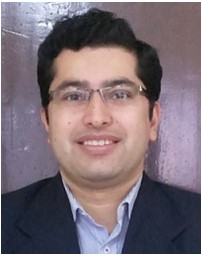
Prof. Bhaskar Kanseri
Department of Physics, Indian Institute of Technology
Delhi,India
Quantum state engineering for science and technology applications
Abstract of Invited Talk
Engineering quantum states of light finds applications in several areas, such as in quantum communication and information technologies, in Quantum sensing and metrology, in fundamental testing etc. Quantum states such as single and entangled photons need to be generated at high rates along with best possible purity and fidelity for implementation in several quantum technologies and use of resonant optical cavities can help us in achieving high rates. The synchronized pulse optical cavities refer to those optical resonators which operate in pulsed regime and thus are having well defined mode properties in time domain. They may be used for fast generation of few photon Fock states and could also work as a short-time memory device, storing a weak pulse containing few photons for timescales ranging from several nanoseconds to several milliseconds. One can employ synchronized pulse optical cavities to approximate as an on-demand quantum source, for Fock state generation and realization of all cavity Schrödinger cat state for quantum information applications. In this talk, use of such cavities for single and few -photon Fock state generation and for quantum memories would be demonstrated. The talk further aims to highlight some of our attempts towards realizing methods for secure quantum communication through free space and optical fibres. A lab realization of differential phase shift QKD protocol would be demonstrated using 2.5 GHz rate laser pulses. Our study also focuses to explore the effects of partial coherence of pump on spatial profile and polarization entanglement features of biphotons. Photon beams having partially spatially coherent features can be more robust against atmospheric losses and turbulence compared to their fully coherent counterparts, offering a way to achieve higher key rates in quantum communication applications.
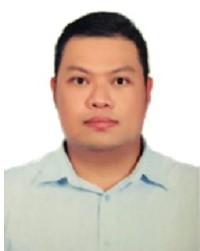
Prof. Ngoc Dang Khoa Tran
Faculty of Mechanical Engineering
Industrial University of Ho Chi Minh City, Vietnam
Title of Invited Talk
Design Compliant Bistable Gripper with Multiple Contact Points in Jaws
Abstract of Invited Talk
A new design of a compliant gripper is described that employed the bistable structure and the jaws with multiple contact points to grip and release the object. The benefit of the mechanism is free energy in the gripping action and increase the steady force holding. The investigation of the nonlinear behavior of the mechanism is estimated with the high value in minimum force compared with the maximum force to improve the gripping force. The contact force of the jaws is analyzed with many dimensions of the objects. Moreover, the dimension of the jaws is optimized to keep the objects by strong robustness. The finite element method is implemented to predict the motion characteristic and verify the maximum stress in the mechanism. A prototype is fabricated by the 3D printed method. The mechanism can work with a circular object with a maximum diameter is 75 mm. The mechanism has potential in many applications such as robotic, medical, agricultural and micro mechanism system.

Prof. Teeranoot
Chanthasopeephan
Biological Engineering, King Mongkut's University of
Technology Thonburi, Thailand
Title of Invited Talk
Applied 3-PRS Parallel Manipulator for Stabilizing Platform: Kinematics and Control
Abstract of Invited Talk
In this paper, a 3-PRS (prismatic, revolute, and spherical) parallel manipulator for platform stabilization is designed. The main purpose of this device is to stabilize visual equipment, which is placed on top of a car to inspect electrical transmission cables as part of routine maintenance. Due to the bulky and heavy infrared cameras used during inspections, a stabilizer platform has been designed to handle the weight of camera equipment up to 10 kg. This device consists of two major mechanisms. The first mechanism is able to adjust the angle of the camera. Thus, the user can focus the camera along the electric transmission lines. The second mechanism is for stabilization. The mechanism serves to stabilize the orientation and position of the camera in roll, pitch, and heave directions. To test the performance of the stabilization mechanism, the device is fed with the known value of the angle as regards input. As such, the device is trying to compensate for the change in angle. Results show that errors between input angles and compensated angles are in the range of 0.4-3%. Errors are seen to be within an acceptable range. It is significant that the resultant errors do not affect the orientation of the camera.
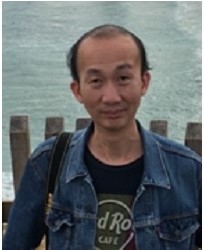
Prof. Hieng Kiat Jun
Department of Mechanical and Material Engineering
Universiti Tunku Abdul Rahman, Malaysia
Title of Invited Talk
Semiconductor Quantum Dot-sensitized Solar Cell: Challenges and Opportunities
Abstract of Invited Talk
Nanosized semiconductors have been demonstrated as viable sensitizers for the application of quantum dot-sensitized solar cells (QDSSC). These solar cells have much research interest in the past few years due to the excellent optical properties of the nanosized semiconductor sensitizers and the high performance produced by the solar cells. Generally, QDSSC works on the same principle as the dye-sensitized solar cell where quantum dot (QD) sensitizers such as semiconductor PbS, CdS or CdSe are used instead of the usual inorganic dye sensitizers. To date, QDSSCs have reached a power conversion efficiency of 15%. However, most of the reported high efficiency QDSSCs are Cd- or Pb-based. In order to elevate the application of emerging solar cell technologies in the mainstream photovoltaic market, low-cost, stable and non-toxic materials are crucial for the development of solar cell modules. Non-toxic QD sensitizers are usually termed as lead-free or cadmium-free materials. In this short review, "green" sensitizers are reviewed. Among the "green" materials that have been adopted as sensitizers in QDSSC included Sn- and Bi-based compounds. Although the performances of "green" QDSSCs such as Ag2S and Bi2S3 QDSSCs are not as high as that of CdS or CdSe based QDSSCs, their performance can be enhanced with post-thermal annealing, carbon doping and the application of passivation layer. The effect of these techniques are discussed in the context of performance and fabrication techniques.
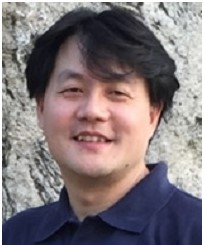
Prof. Chengkuo Lee
Department of Electrical and Computer Engineering
National University of Singapore, Singapore
Title of Invited Talk
AIoT based Sensing Technology for Future Smart Homes and Cities
Abstract of Invited Talk
With the high-speed data transmission capability enabled by the 5G wireless communication network, people have envisioned the Internet of Things (IoT) system towards smart homes and cities where numerous interrelated electronic devices are linked together in a vast and complicated network. The surging artificial intelligence (AI) technologies push forward the development of diversified smart sensors used at the smart homes in order to realize the advanced artificial intelligence of things (AIoT) technology. The human machine interfaces (HMI) have been improved from tactile sensors, such as touchpads and joysticks, to now including the accurate detection of dexterous body movements in more diversified and sophisticated sensors. In this talk, we discuss a few triboelectric based HMIs including gloves, socks, soft robotic manipulator, and exoskeleton for object recognition, gaming, VR/AR applications, rehabilitation, and digital twin applications. Besides, a smart floor monitoring system is reported with the merits of low cost and high scalability for smart home applications.

Prof. Yu-Lin Shen
Department of Mechanical Engineering
University of New Mexico, U.S.A.
Title of Invited Talk
Evolution of Wrinkle Patterns on Soft Substrate-Attached Thin Films-Direct Numerical Predictions
Abstract of Invited Talk
Surface wrinkling instability on thin films attached to a compliant substrate is a well-recognized form of deformation, which can develop under mechanical or thermal loading. Surface wrinkling in engineering systems has traditionally been viewed as a form of damage. Researchers in recent years, however, have increasingly exploited mechanical instabilities to create surface patterns with desirable optical, electronic, mechanical, or energy-harvesting functions. The prediction of film-substrate deformation instabilities is of importance, but the phenomenon is inherently complex and difficult to simulate using common analytical/numerical tools. In this presentation, we highlight our recent developments of a practical computational technique utilizing the embedded imperfections to trigger wrinkle formation. This approach leads to direct modeling from pre-instability to post-instability, including transitions of the instability modes, in a seamless manner, and gives new insights into the evolution of wrinkle patterns. The investigations feature large-scale 3D simulations under general in-plane compression, spanning the entire biaxial spectrum in between the extreme cases of uniaxial and equi-biaxial loading. The loading-unloading histories can also be directly analyzed. The state of biaxiality is found to influence the surface pattern significantly, and each instability mode can be traced back to certain abrupt changes in the overall load-displacement response.
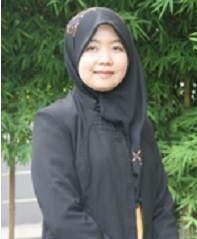
Dr. Nabila A. Karim
Fuel Cell Institute
Universiti Kebangsaan Malaysia, Malaysia
Title of Invited Talk
Overview of the research progress and challenges of the application of carbon-based materials in Enzymatic Biofuel Cell (EBFC)
Abstract of Invited Talk
EBFC as micro-power sources successfully supplied power for the biosensor in the military and environmental application and implantable medical devices because it has advantages such as good bio-compatibility, easy miniaturization, and mild working conditions. The enzyme used as bio-catalyst shows high selectivity and specificity in the fuel oxidation, eliminating the membrane separator for easy EBFC miniaturization. The activity density obtained from the total enzyme loading on the electrode surface per unit area conducts the reaction in EBFC. Loading can be optimized using support materials that highly interact with the enzymes. Support materials require a high surface area to improve the electrochemical performance of the enzyme in EBFC. Support requires must show low aggregation for enzyme immobilization, good electrocatalytic activity, and electronic properties. Various supports have been used in EBFC; however, carbon-based supports have been widely applied in EBFC because they have various advantages. Among the carbon-based supports that have been developed in EBFC are single-wall and multi-wall carbon nanotubes, carbon nanoparticles, carbon black, mesoporous carbon, graphene, carbon spheres, and multiples carbon supports. All these types of carbon are commonly used in renewable energy conversion, alternative energies, and storage systems, and some carbon-based materials may have high potential that has not been applied in EBFC. This paper presented current research using carbon-based materials and challenges to produce high performance in applications in EBFC.
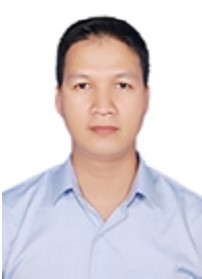
Assoc. Prof. Dr. Huy-Tuan Pham
Faculty of Mechanical Engineering
Ho Chi Minh City University of Technology and Education,
Vietnam .
Title of Invited Talk
Design and Optimization of High-Precision Compliant Mechanisms for Vibration-Assited Machining Methods
Abstract of Invited Talk
Ultrasonics and vibration-assisted
machining are hybrid machining methods that combine
small vibration with high or moderate frequency,
respectively, into either the subtractive or additive
machining approaches to enhance performance and
efficiency. The integration of oscillation to the
cutters or workpieces to vibrate them in one or more
directions intermittently reduces the contact area
between the blade and the workpiece. Recent researches
show that the benefits of these advanced machining
methods are the reduction in friction, machining force,
cutting heat, reduction of tool wear, and extension of
tool life. Therefore they improve the surface finish and
quality, enhance chips removal, and suppression of burr
formation. However, the challenges of establishing this
manufacturing equipment are the vibration transferring
from ultra-high precision actuators to the machining
stages without damaging them. The compliant mechanism is
a favorable solution for high-precision machines due to
its spectacular advantages. This paper proposes a new
2-DOF XY vibration compliant stage using flexural hinges
and leaf springs for a vibration-assisted milling
application. The design uses a symmetrical two-stage
lever mechanism to transfer and amplify vibrations from
piezo-actuators. In the design process, the Taguchi
method and finite element analysis are used to evaluate
the influence of each design variable on the design
optimization problem. The objectives of the design are
to maximize the first-order natural frequency and
minimize the parasitic motion while maintaining the
equivalent stress under the allowable limit. Optimum
designs are found which would be preferable for various
vibration-assisted milling applications.

Assoc. Prof. Ir. Dr. Wong Yew Hoong
Department of Mechanical Engineering,
Faculty of Engineering, University of Malaya, Malaysia
Title of Invited Talk
Study of Trigonal-Sm2O3 as High-k Gate Dielectric on Ge-Based Metal-Oxide-Semiconductor (MOS) Device Structure
Abstract of Invited Talk
In this study, Sm2O3/Ge stack based capacitor prepared from thermally oxidized/nitrided sputtered metallic Sm on Ge semiconductor in N2O ambient have been comprehensively inv, , estigated. The film crystall, inity, chemical, , composition and interface chemical bonding states stability was characterized from X-ray diffraction (XRD), Raman spectroscopy and X-ray photoelectron spectroscopy (XPS). Formation of trigonal-Sm2O3 dielectric interface together with an interfacial layer containing asymmetrically distributed (Ge-O, Sm-O-Ge and Ge-N) species has been verified. Suppression of GeO (g) volatilization was evident from the XPS analysis due to germanate (Sm-O-Ge) formation. Structural morphology characterization using high resolution transmission electron microscope (HRTEM) also validated double stack amorphous interfaces obtaining physical oxide thickness (tox) from 4.25 - 6.91 nm. Band alignment and electrical measurements revealed the highest conduction band offset (CBO), ∆Ec of 2.60 eV and valence band offset (VBO) ∆Ev of 2.98 eV leading to lowest leakage current density Jg ~ 8.38 ∙ 10-6 A cm-2 at enhanced breakdown field, E_BD of 13.31 MV cm-1. The large breakdown field has been ascribed to fewest effective oxide charge (Q_eff), slow trap density, (Q_it) and interface traps density (D_it) at this duration. Additionally, a low equivalent oxide thickness, t_EOT ~ 0.75 nm with a high dielectric constant k ~ 31.19 was achieved but with high D_it ~ 1013 eV-1cm-2. These properties render that Sm2O3 could serve as dielectric material for future high-k/Ge stack based metal oxide semiconductor technology, although requires further investigation for D_it improvement.

Prof. Mohd Hafiz Dzarfan Othman
Advanced Membrane Technology
Research Centre (AMTEC)
University Teknologi Malaysia, Malaysia
Title of Invited Talk
Fabrication of Inexpensive Ceramic Membranes via Phase Inversion/Sintering Process and Their Application in Water & Wastewater Treatment
Abstract of Invited Talk
Membrane technology has been widely embraced in water and wastewater treatments due to high efficiency and excellent product output, which ensures the consistent delivery of clean and safe water to meet the ever-increasing global water demand. Polymeric membranes have been the most commonly used materials in membrane applications attributed to low material cost and high market availability. Since the last two decades, ceramic membranes have gradually emerged as an excellent alternative to polymeric membranes as these membranes exhibit excellent chemical and thermal resistance, superior mechanical properties, and longer operational lifetime, which could not be achieved by some conventional polymeric membranes. However, ceramic membranes suffer from high material costs that hinder their uses in real applications. Recently, our research group have successfully developed various types of low-cost high-performance ceramic membranes from alternative ceramic materials, such as natural occurring clays, agricultural and industrial waste, and animal bones via phase inversion/sintering process. These membranes have shown some impressive performance in several membrane applications, such as microfiltration, photocatalytic membrane, and membrane distillation. With these successful breakthroughs, ceramic membranes have been made to be more affordable and economically feasible for real membrane applications with enhanced performance efficiency.
Symposium Proceedings 2021 (PDF DOWNLOAD)